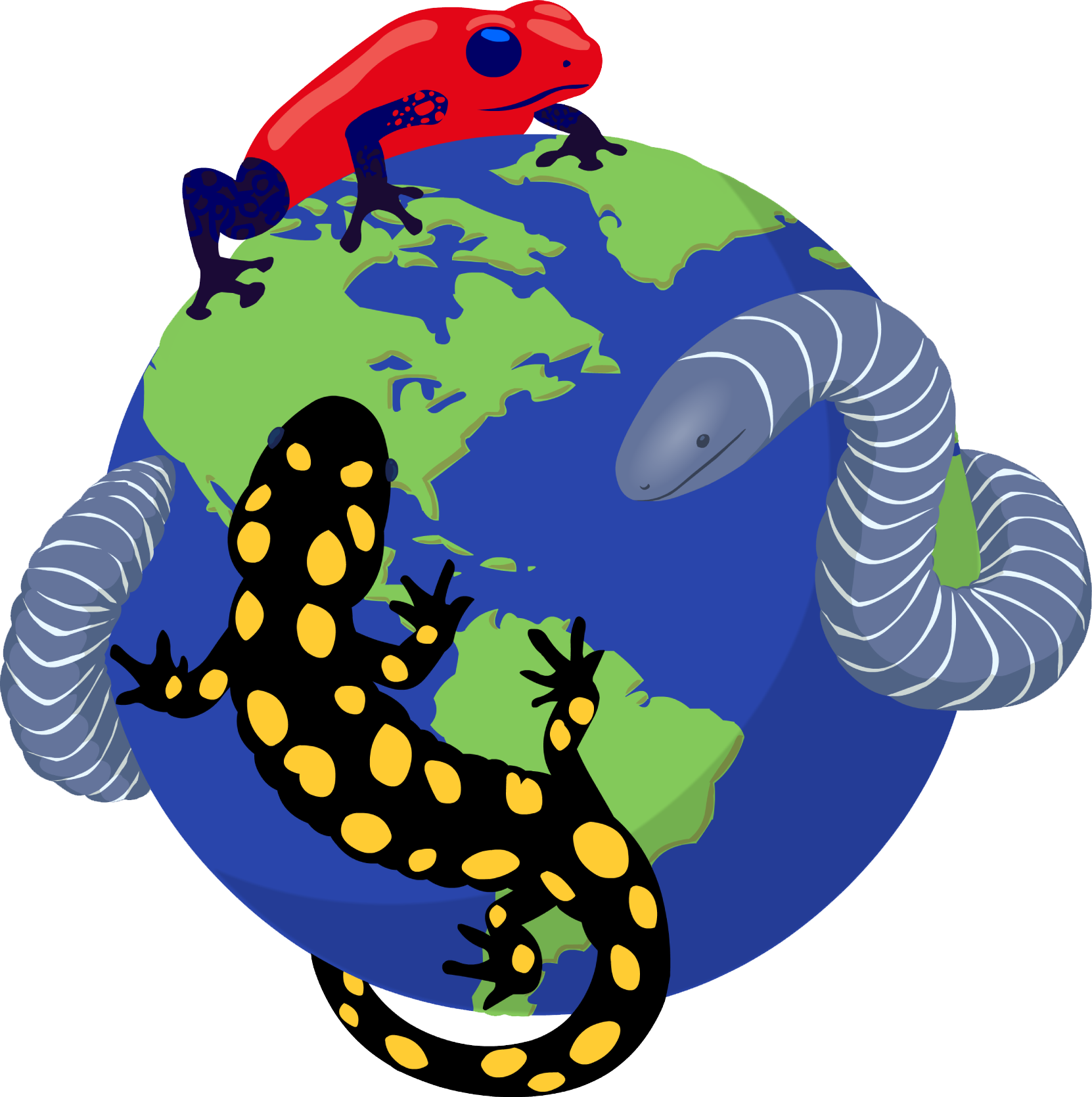|
Oedipina motaguae Brodie, Acevedo & Campbell, 2012
Motagua Worm Salamander Subgenus: Oedipina | family: Plethodontidae subfamily: Hemidactyliinae genus: Oedipina |
| Species Description: Brodie ED Jr, Acevedo M, Campbell JA 2012 New salamanders of the genus Oedipina (Caudata: Plethodontidae) from Guatemala. J Herpetology 46: 233-240. | |
|
|
|
Description Diagnosis: Oedipina motaguae can be distinguished from other members of the Oedipina subgenus by its robust body, a broader and shorter snout, pale venter, pale limbs possessing few melanophores, costal grooves (21 on each side), intercostal folds (15), vomerine teeth (13-14), premaxillary plus maxillary teeth (13-19), small and narrow manus and pes (1.07 mm and 1.27 mm, respectively), and large, horizontally elongate postiliac glands (Brodie et al. 2012). Coloration in life: Oedipina motaguae has a dark, brownish-black body with abundant white speckling caused by iridiophores. On the head, the white speckling is concentrated on top of the head and eyelids; on the trunk, the speckling is most prominent along the middorsum and dorsolaterally. The tail does not have as much white speckling as the head or trunk. The limbs have a brown ground color with occasional white specks on the proximal segments (Brodie et al. 2012). Coloration in preservation (alcohol after formalin): In preservative, the specimen becomes medium gray at the top of the head, dorsum of body, and the tail; there is no white speckling observed on the body. The dorsum is lighter than the lower flanks between the costal grooves, and the areas surrounding the costal grooves are darker than the costal folds. The venter of the head is a pale cream color, and the throat from the gular fold to the forelimbs is gray; the venter of the body is a mix of these two colors. The venter of the tail is a darker gray than the rest of the body. The limbs are obviously paler than the body (Brodie et al. 2012). Variation: The snout length of Oedipina motaguae varies from 30.0 mm to 52.0 mm. Individuals can have anywhere between 13-14 vomerine teeth and 13-19 premaxillary plus maxillary teeth. White speckling on the body can vary in intensity, but remain concentrated at the top of the head, eyelids, middorsum, and dorsolaterally (Brodie et al. 2012). Distribution and Habitat Country distribution from AmphibiaWeb's database: Guatemala
Possible reasons for amphibian decline General habitat alteration and loss Comments There is taxonomic confusion between this species and Oedipina taylori. The authors to describe this species believe several Oedipina motaguae specimens were incorrectly described as Oedipina taylori. There may be other Oedipina motaguae specimens classified as Oedipina taylori in museum collections. This species is named for the Motagua Valley, where was first discovered (Brodie et al. 2012).
References
Brodie, E.D. Jr., Acevedo, M., Campbell, J.A. (2012). "New salamanders of the genus Oedipina (Caudata: Plethodontidae) from Guatemala." Journal of Herpetology, 46(2), 233-240. [link] Originally submitted by: Amanda D. Wong (first posted 2012-09-05) Edited by: Michelle S. Koo (2012-10-21) Species Account Citation: AmphibiaWeb 2012 Oedipina motaguae: Motagua Worm Salamander <https://amphibiaweb.org/species/7860> University of California, Berkeley, CA, USA. Accessed May 24, 2025.
Feedback or comments about this page.
Citation: AmphibiaWeb. 2025. <https://amphibiaweb.org> University of California, Berkeley, CA, USA. Accessed 24 May 2025. AmphibiaWeb's policy on data use. |



 Raffaëlli Account
Raffaëlli Account Map of Life
Map of Life